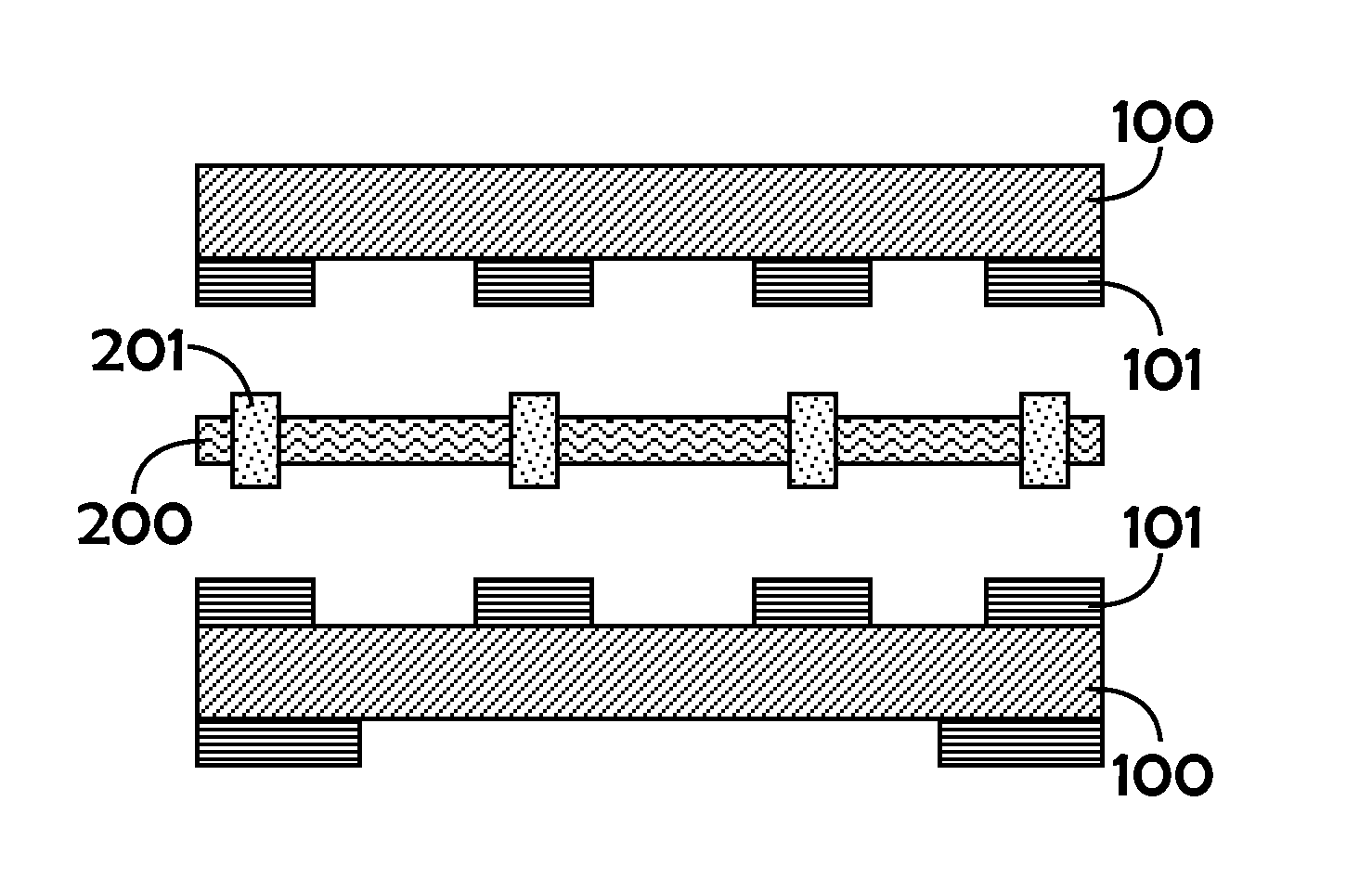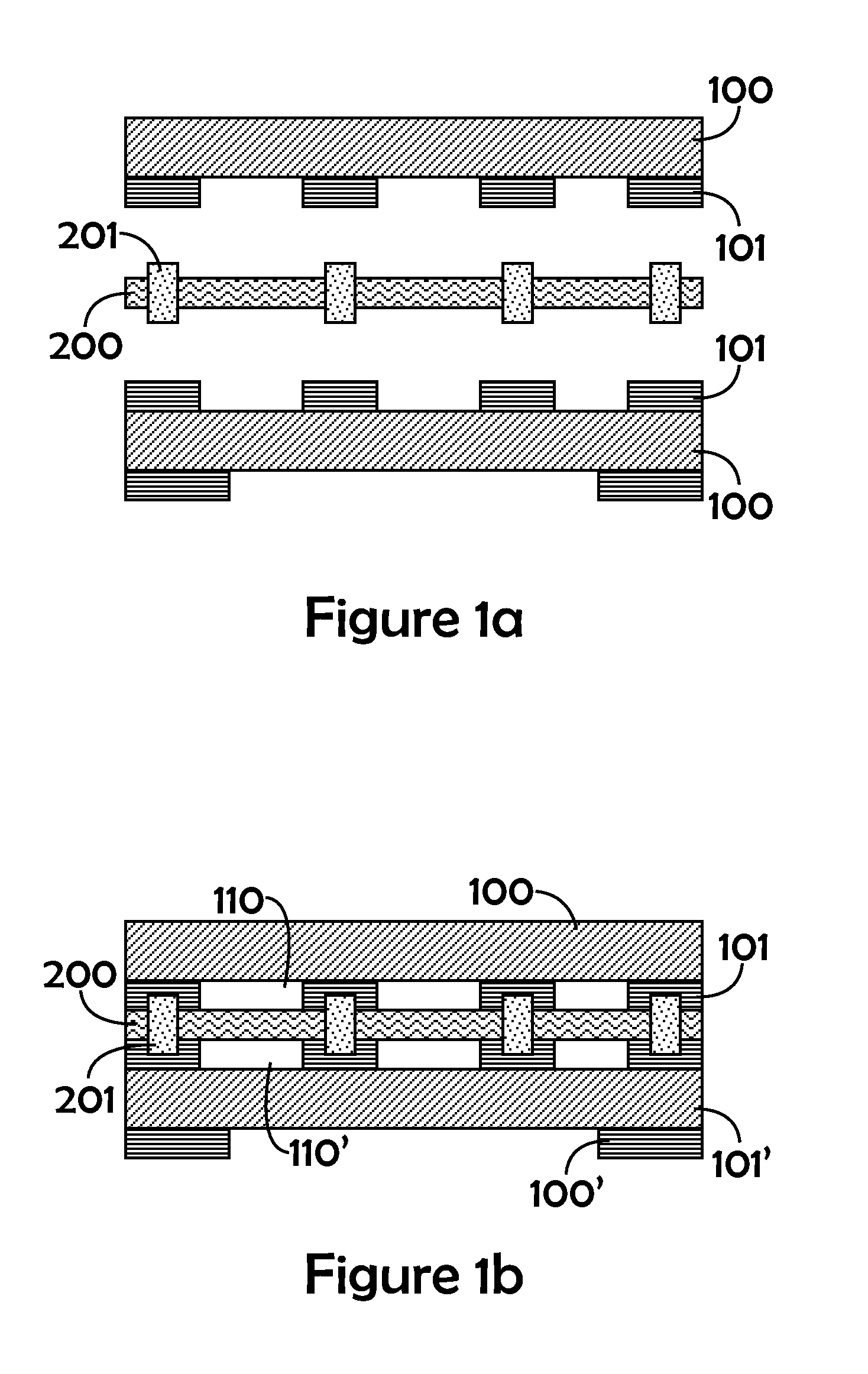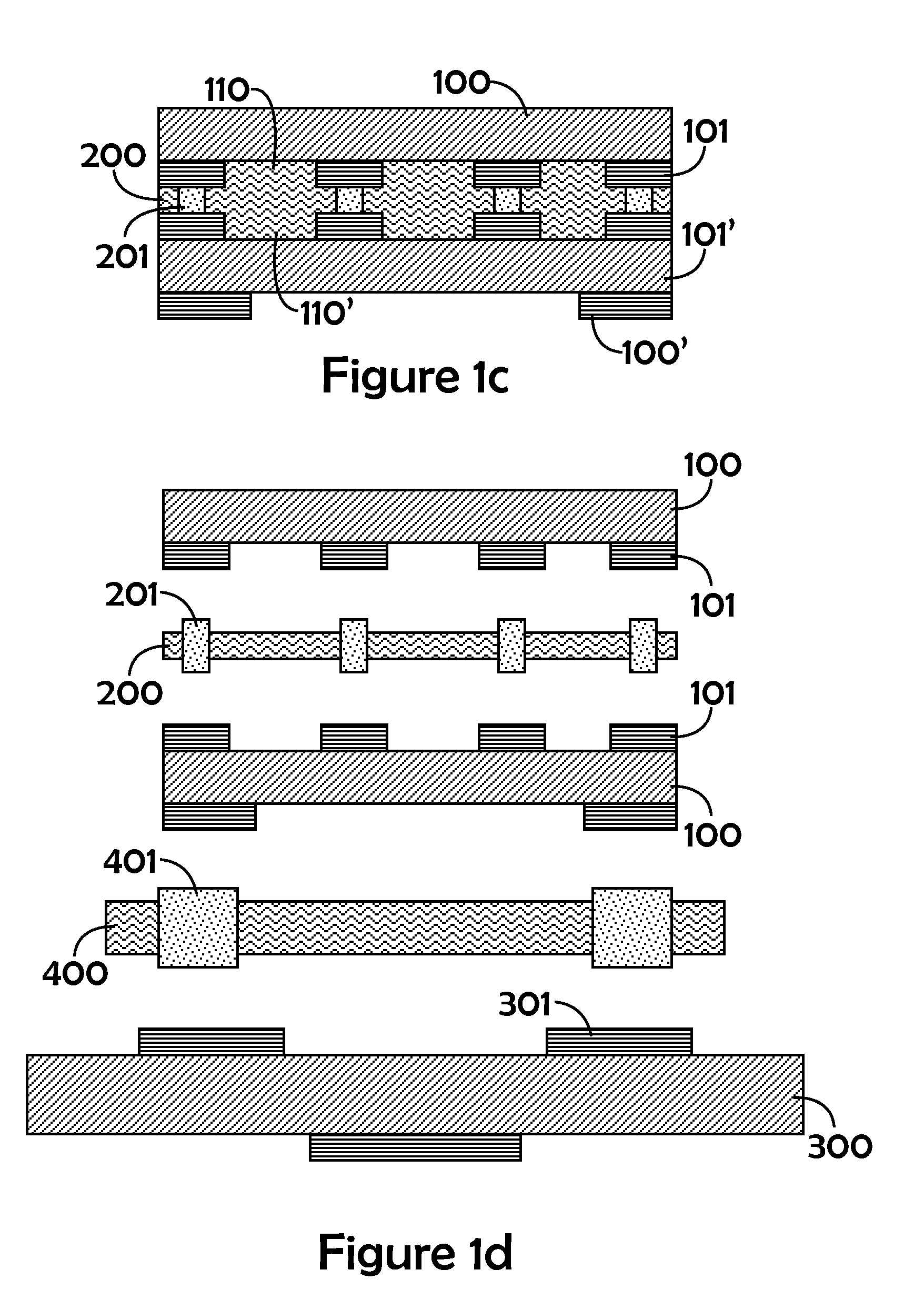Conducting paste for device level interconnects
a technology of conducting paste and interconnects, which is applied in the direction of conductors, non-metal conductors, printed circuit non-printed electric components association, etc., can solve the problems of no mechanical strength of high loading systems and no prior art disclosure of creating conducting pastes for interconnects
- Summary
- Abstract
- Description
- Claims
- Application Information
AI Technical Summary
Benefits of technology
Problems solved by technology
Method used
Image
Examples
Embodiment Construction
[0030]For a better understanding of the present invention, together with other and further objects, advantages, and capabilities thereof, reference is made to the following disclosure and appended claims in connection with the above-described drawings. The present invention is further described with reference to the accompanying figures where like reference numbers correspond to the same elements.
[0031]An example of an embodiment of this invention is a nano-micro conducting paste made using fifty grams of cycloaliphatic epoxy resin (e.g., one sold under product designation “ERL-4211” by the Union Carbide Corporation, Danbury, Conn.) mixed with about 50 g of hexahydro-4-methylphthalic anhydride and 0.4 g N, N dimethyl benzylamine. Further, 5 g of silver nano particles with average particle size 10-15 nanometers and 6 g of silver micro particles with average particle size five microns is thoroughly added to the mixtures. Then, 11 g of mixed silver is added to 2.5 g of the cycloaliphat...
PUM
| Property | Measurement | Unit |
|---|---|---|
| size | aaaaa | aaaaa |
| temperatures | aaaaa | aaaaa |
| size | aaaaa | aaaaa |
Abstract
Description
Claims
Application Information
 Login to View More
Login to View More - R&D
- Intellectual Property
- Life Sciences
- Materials
- Tech Scout
- Unparalleled Data Quality
- Higher Quality Content
- 60% Fewer Hallucinations
Browse by: Latest US Patents, China's latest patents, Technical Efficacy Thesaurus, Application Domain, Technology Topic, Popular Technical Reports.
© 2025 PatSnap. All rights reserved.Legal|Privacy policy|Modern Slavery Act Transparency Statement|Sitemap|About US| Contact US: help@patsnap.com



